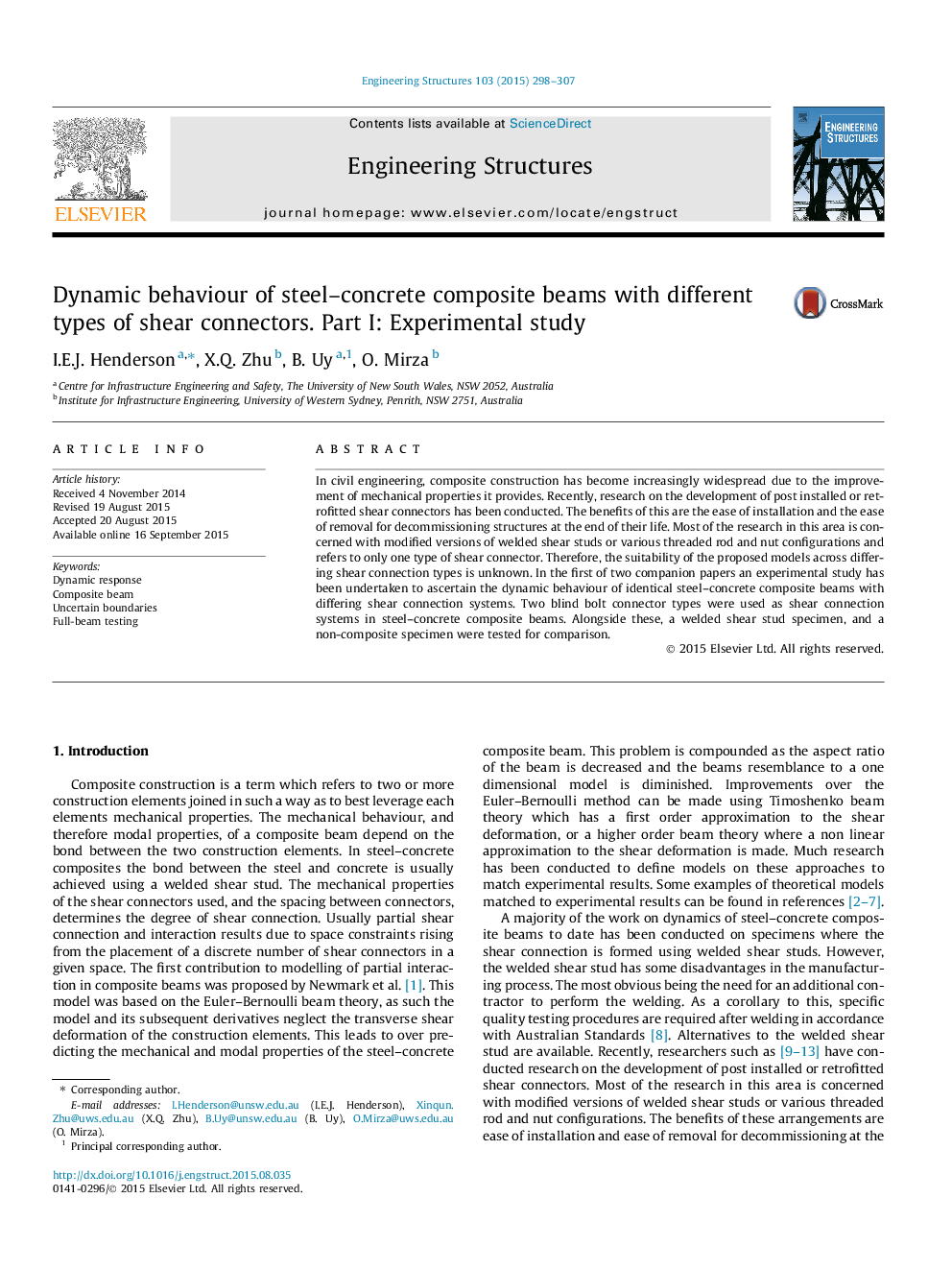| Article ID | Journal | Published Year | Pages | File Type |
|---|---|---|---|---|
| 265954 | Engineering Structures | 2015 | 10 Pages |
•The dynamic behaviour of composite beams with differing shear connections has been investigated.•Results of material tests, push tests, and full-scale beam tests were presented.•The push tests showed that the different shear connection types had different stiffness values.•It has been shown that the shear connectors are comparable to a standard welded shear stud.•It has been shown that the boundary condition experienced was not rigid.
In civil engineering, composite construction has become increasingly widespread due to the improvement of mechanical properties it provides. Recently, research on the development of post installed or retrofitted shear connectors has been conducted. The benefits of this are the ease of installation and the ease of removal for decommissioning structures at the end of their life. Most of the research in this area is concerned with modified versions of welded shear studs or various threaded rod and nut configurations and refers to only one type of shear connector. Therefore, the suitability of the proposed models across differing shear connection types is unknown. In the first of two companion papers an experimental study has been undertaken to ascertain the dynamic behaviour of identical steel–concrete composite beams with differing shear connection systems. Two blind bolt connector types were used as shear connection systems in steel–concrete composite beams. Alongside these, a welded shear stud specimen, and a non-composite specimen were tested for comparison.
